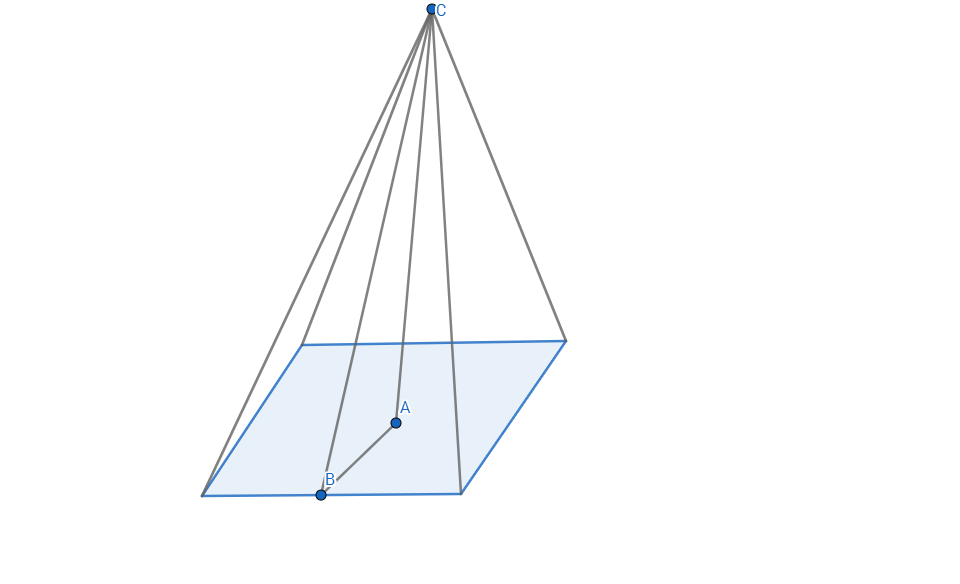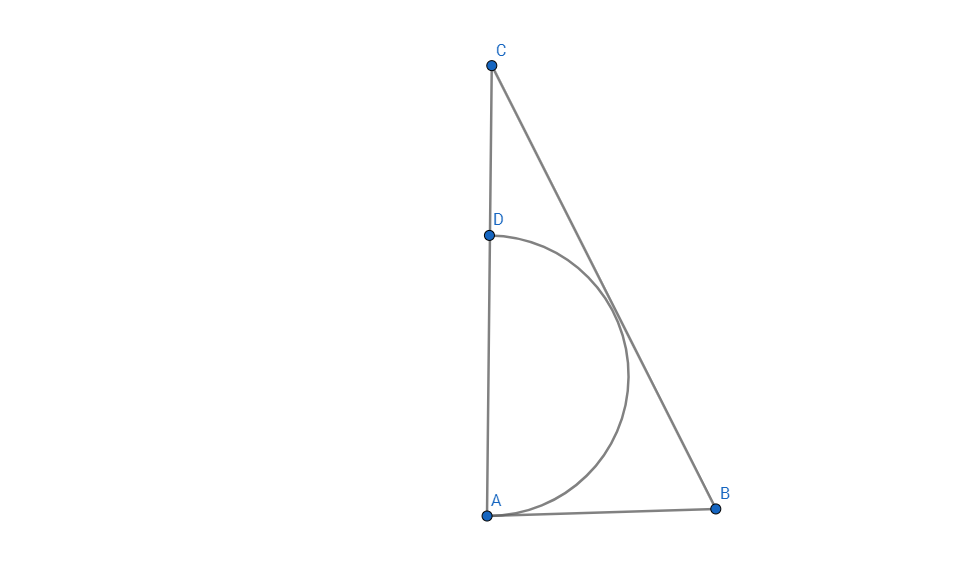Square Pyramid Problem


Let be the radius of the semicircle and the real number .
Given: A side of the base of the square pyramid is , the slant height , and , find the surface area of the square pyramid.
Note: I liked a problem I saw on Brillant(Problem of the week) and the problem above is a slightly altered version of that problem.
:
The answer is 96.
This section requires Javascript.
You are seeing this because something didn't load right. We suggest you, (a) try
refreshing the page, (b) enabling javascript if it is disabled on your browser and,
finally, (c)
loading the
non-javascript version of this page
. We're sorry about the hassle.
From the diagram above:
Let N be the center of the circle and r be the radius of the circle, then r = D N = A N = N M and A B = 2 x = 2 r j ⟹ B M = 2 r j .
Let C M = y .
△ N M C ∼ △ A B C ⟹ 2 j = 2 ( r + 1 ) r j + 2 y ⟹ y = 2 j .
For △ N M C the Pythagorean theorem ⟹ 4 j 2 + r 2 = r 2 + 2 r + 1 ⟹ r = 8 j 2 − 4 ( j > 2 ) ⟹ the height of the square pyramid h = A C = 2 r + 1 = 4 j 2 and the base x = r j = ( 8 j 2 − 4 ) j ⟹ 2 x = ( 1 6 j 2 − 4 ) j ⟹ the slant height s = ( 2 x ) 2 + h 2 = 1 6 j ( j 2 + 4 ) = 4 5 j = 1 6 2 0 j ⟹ 1 6 j ( j 2 − 1 6 ) = 0 ⟹ j = 4 for j > 2 .
j = 4 ⟹ r = 2 3 , x = 6 and s = 5 ⟹ the surface area of the square pyramid A s = 2 x s + x 2 = 9 6 .
Note: △ A B C is a ( 3 , 4 , 5 ) triangle.
An alternative method is illustrated below:
Using the above isosceles triangle we have:
C G = B C = 4 5 j , G B = x = r j , A C = h = 2 r + 1 and r = O A = O E = O F = O D .
From the diagram the Area of the isosceles triangle is A = 2 ( 2 r + 1 ) r j = ( 2 1 r 2 + 4 5 r ) j = ( 4 2 r 2 + 5 r ) j ⟹ r ( 2 r − 3 ) = 0 ⟹ r = 2 3 for r > 0 ⟹ A B = 2 x = 4 3 j , A C = h = 4 and B C = s = 4 5 j .
∴ For right △ A B C we have: 1 6 2 5 j 2 = 1 6 9 j 2 + 1 6 ⟹ j 2 = 1 6 ⟹ j = 4 for j > 2 ⟹ x = 6 and s = 5 ⟹ the surface area of the square pyramid A s = 2 x s + x 2 = 9 6 .